Smaller CUVs are easier to gift-wrap
By John Gilbert
Looking for a last-minute Christmas gift for a very close loved one, like a wife, or a husband, or maybe a mom or dad, or a deserving son or daughter?
A real surprise…how about a new car? Choose a red one, and put a big bow on it. Kidding? Of course I’m kidding. Or…maybe not. It could be a family gift, in fact. The new second — or third — vehicle the family has needed for a long time as it grows, and outgrows, the family truckster that always used to be sufficient.
If you really wanted to take such a plunge, you’re in luck, because the SUV craze has died away, taking with it the big gas-guzzling SUVs of yesteryear. Replacing them are what they’re calling CUVs — Compact or crossover utility vehicles. They make much more sense, if they’re big enough, and often they are big enough. The key is that they have to haul some folks and some stuff, and they have to do it in all sorts of weather, so all-wheel-drive is a must.
In this effort, we are not going to make an all-out comparison, just a group of suggested alternatives that may or may not be surprising, just to lay out a few of the rapidly-expanding CUVs that have clogged the marketplace in the last couple of years. We’re assuming we all know about the “regulars” — the Escape, CR-V, RAV4, Tucson, Sportage, Jeep Cherokee, Renegade types — and we’re pointing out how the segment has expanded. Here are a few:
Buick Encore — The Buick Enclave is a large and luxurious midsize SUV that was the perfect alternative to the monster-truck SUVs, and Buick followed it up with the Encore, which is a much smaller, lighter and more economical crossover that still retains the trademark Buick look, but runs on a 1.4-liter turbocharged 4-cylinder tuned to either 138 or 153 horsepower. If this is big enough, fine. If you want something still lighter, you can go for a Chevrolet Trax, essentially the same vehicle with less luxury and sound deadening. The Encore and Trax show how global our auto world has become, both being built in the South Korea GM plant, with the engine and transmission coming from Korea as well, keeping prices in the mid-$20,000 range, and capable of reaching 30 miles per gallon. Buick is adding the Envision, placed between Encore and Enclave, with more room and less fuel efficiency.
Fiat 500x — Another example of global engineering, with FCA — Fiat Chrysler Automobiles — conspiring on a couple of neat all-weather vehicles. The Jeep Renegade is a cute ute that retains its Jeep qualities, and it is built by Fiat in Italy, where Fiat liked it so well it keeps some to sell in Europe. Then it took its own lovable little Fiat 500 and gave it a dose of steroids, which actually meant it was expanded and plunked down on the Renegade platform. Presto! The Fiat 500x, where “x” marks the spot for all-wheel drive and an expanded interior and rugged exterior. Fiat already was working with Chrysler on its 2.4-liter 4-cylinder, applying the Fiat MultiAir technology to make it perform better and more economically, so that’s the engine in both the Renegade and the 500x. Not a bad choice, if you like the Jeep go for the Renegade, if you like the 500, you’ll find the x model for $25,000, with 30 mpg capability and a fun to drive — anywhere — ability.
Infiniti QX30 — If Nissan has confused us all with its upscale Infiniti line and its new nomenclature, this one cuts through all the confusion and provides a fantastic sports car in CUV form with the QX30. (Remember, “G” is for sedans, and “Q” is for SUVs.) The QX30 is compact enough that some will find it cramped in the rear seat. If that’s not an issue, you will love this vehicle priced in the mid-$30,000 range. Nissan’s ability to make fine engines has been appreciated enough by Mercedes Benz that the two are actually working together on modern engine design and manufacture, with the same compact, high-performing 2.0-liter 4-cylinder turbo powering the GLA Mercedes and the QX30, with 208 horepower and 258 foot-pounds of torque. You will want the AWD version, which sits a tad higher but retains all the sportiness of the FWD model, and gets you up those icy hills. I have topped 32 miles per gallon with this rocket, in both the Mercedes and Infiniti models.
Jaguar F-Pace — Yes, even Jaguar has gotten into the crossover act, and why not? With Land Rover’s expertise to partner up with, the F-Pace is low and sleek and more than capable, with your choice of a 2.0-liter 4-cylinder turbodiesel with 180 horsepower and a brazen 318 foot-pounds of torque, or the optional 3.0 supercharged V6 with 380 horses and 332 foot-pounds. Amazing luxury, performance and AWD in the same package, and price is moderate for what you get, at $42,000 up to $60,000, depending on your restraint at the option bin. Despite understated good looks, the F-Pace with either engine has the soul and personality of Jaguar’s legendary lair of cats, and it drives with the same eye-catching flair.
Lexus 200t F-Sport — If Infiniti was going to go sporty on its new CUV, we just knew Lexus would be right there to defend its turf, the 200t F-Sport is more than just a capable competitor. The RX is the top-selling of all Lexuses, but the NX covers all the bases, with a 2.0-liter turbocharged 4 with 235 horsepower and 258 foot-pounds of torque, or an optional hybrid with a 2.5 gas engine and battery pack and 194 horses. The racy look, from the signature Lexus “spindle” grille back costs a bit, at right around $40,000 to start. With the AWD operated by either a 6-speed automatic or a CVT, the NX 200t F-Sport is more fun that we’re used to getting in any Toyota vehicle, and can top 30 mpg too.
Lincoln MKC — This is the CUV Matthew McConaughy would choose and he wouldn’t be wrong. You can spend more for the bigger brother MKX or MKT, but the MKC answers all the AWD questions you might ask. The others have 2.7, 3.5 or 3.7 V6 engines, but the MKC gets into Ford’s EcoBoost 4-cylinders with 240 horse/270 foot-pounds with the 2.0, or 285/305 with the 2.3 turbos. Price ranges from $33,000 to over $40,000 depending on choices. Power is exemplary and fuel economy can be surprisingly good if you keep your foot out of the turbo boost. A little smaller and lighter than its more powerful brethren, it is more agile and gets clearly better fuel economy. Besides, I think it looks better.
MAZDA CX-3 — I’ve had the chance to drive the larger, but not too large, CX-5 on Mazda Laguna Seca road-racing track, and it blew me away, but the smaller and ligher CX-3 follows that up with one of the smallest and quickest and most fun compact CUVs on the market. Powered by a 2.0-liter Skyactiv 4-cylinder with 146 horsepower and torque, and a slick-shifting 6-speed in-house automatic transmission, the CX-3 with AWD is a jewel at a price that starts in the low-$20,000s. Only drawbacks are the extremely tight rear seat and a limited stowage area behind the fold-down rear seat. But if your kids are little, or large enough to be grown and gone, the CX-3 is a blast to drive and great to look at, with gas mileage in the mid-30s on regular gas.
Subaru Crosstrek — Subaru was making all-wheel-drive crossover-like vehicles before SUVs, and ’way before CUVs, so now they’re claiming they started the segment. They didn’t, but it’s a coincidence Subaru can capitalize on. The Forester has grown up to be a surprisingly large and spacious SUV, and even the Outback, based on the compact Impreza platform, has expanded and loses its fuel-efficiency if you go for the 3.6-liter flat-6. But there is a little gem called the Crosstrek, which has a surprisingly curvaceous body that resembles Subaru’s last concept vehicle more than its somewhat stodgy brethren. The base 2.0-liter flat-4 has 148 horsepoewr and 145 foot-pounds of torque, and you can find an optional hybrid that reaches 160 horsepower. But the price is right, running from $22,500, and other than the hot-rod WRX STi, the Crosstrek is my pick. Come to think of it, you can get the WRX without the STi power-surge and still get the turbo engine and AWD…Hmmmm.
There you have a batch of CUVs to whet your appetite. You also can find those 2.0-liter-turbo-powered crossovers in Mercedes, BMW, Audi and Acura dealerships, and they are truly impressive, state-of-the-art vehicles. But you will quickly get up and over the $35,000 range. Maybe we’ll deal with a collection of them in a future column.


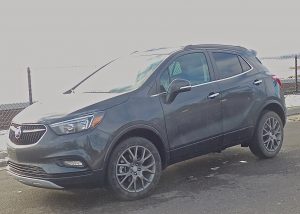
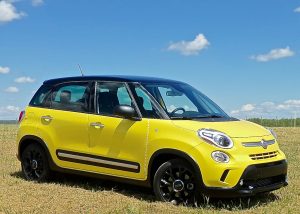
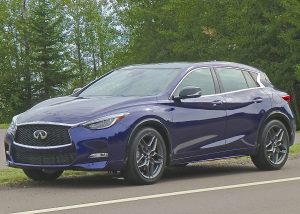
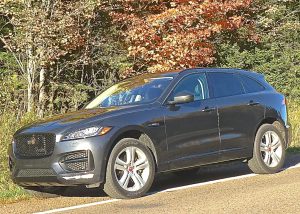
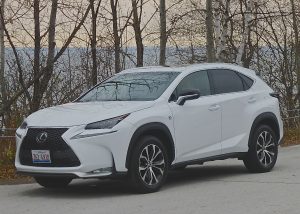
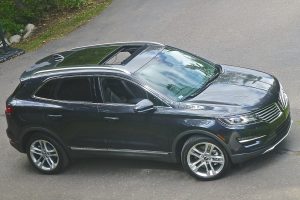
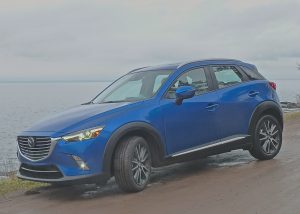
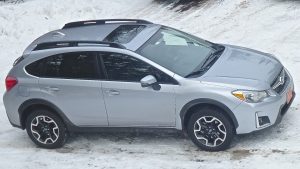
 John Gilbert is a lifetime Minnesotan and career journalist, specializing in cars and sports during and since spending 30 years at the Minneapolis Tribune, now the Star Tribune. More recently, he has continued translating the high-tech world of autos and sharing his passionate insights as a freelance writer/photographer/broadcaster. A member of the prestigious North American Car and Truck of the Year jury since 1993. John can be heard Monday-Friday from 9-11am on 610 KDAL(www.kdal610.com) on the "John Gilbert Show," and writes a column in the Duluth Reader.
John Gilbert is a lifetime Minnesotan and career journalist, specializing in cars and sports during and since spending 30 years at the Minneapolis Tribune, now the Star Tribune. More recently, he has continued translating the high-tech world of autos and sharing his passionate insights as a freelance writer/photographer/broadcaster. A member of the prestigious North American Car and Truck of the Year jury since 1993. John can be heard Monday-Friday from 9-11am on 610 KDAL(www.kdal610.com) on the "John Gilbert Show," and writes a column in the Duluth Reader.